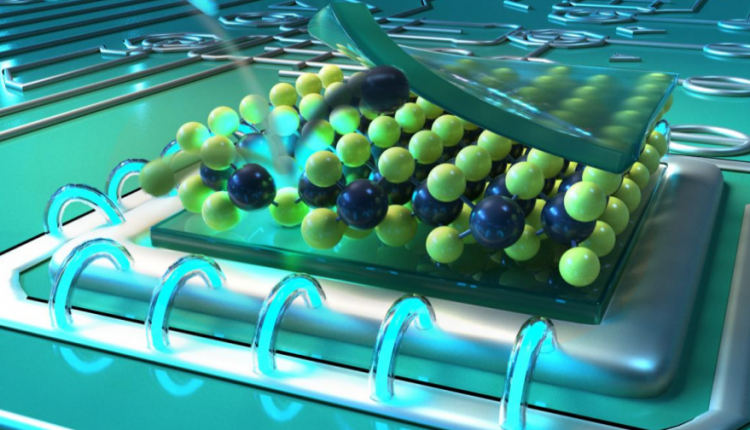
Quantum Light Sources Placed in Atomically Thin Material Layers
By Ruth Seeley
Quantum light sources integrated into photo circuits are highly sensitive. When placed in atomically thin material layers, they make quantum sensors for smartphones and the development of extremely secure encryption technologies for data transmission possible.
An international team led by Alexander Holleitner and Jonathan Finley, physicists at the Technical University of Munich (TUM), has succeeded in placing light sources in atomically thin material layers with an accuracy of just a few nanometers using the new helium ion microscope at the Walter Schottky Institute’s Center for Nanotechnology and Nanomaterials, which can be used to irradiate such material with an unparalleled lateral resolution.
Previous circuits on chips rely on electrons as information carriers. In the future, photons which transmit information at the speed of light will be able to take on this task in optical circuits. Quantum light sources, which are then connected with quantum fiber optic cables and detectors, are needed as basic building blocks for such new chips.
The research is an initial key step towards building optical quantum computers. Light sources will have to be coupled with photon circuits (waveguides for example), to make light-based quantum calculations possible.
The critical point here is the exact and precisely controllable placement of the light sources. It is possible to create quantum light sources in conventional three-dimensional materials such as diamond or silicon, but they cannot be precisely placed in these materials.
Deterministic defects
The physicists then used a layer of the semiconductor molybdenum disulfide (MoS2) as the starting material, just three atoms thick. They irradiated this with a helium ion beam which they focused on a surface area of less than one nanometer.
In order to generate optically active defects, the desired quantum light sources, molybdenum or sulfur atoms are precisely hammered out of the layer. The imperfections are traps for so-called excitons, electron-hole pairs, which then emit the desired photons.
On the road to new light sources
Together with theorists at TUM, the Max Planck Society, and the University of Bremen, the team developed a model which also describes the energy states observed at the imperfections in theory.
In the future, the researchers also want to create more complex light source patterns, in lateral two-dimensional lattice structures for example, in order to thus also research multi-exciton phenomena or exotic material properties.
This is the experimental gateway to a world which has previously only been described in theory within the context of the so-called Bose-Hubbard model which seeks to account for complex processes in solids. There may be not only theoretical progress but also possible technological developments as a result of the model developed by the TUM physicists. Since the light sources always have the same underlying defect in the material, they are theoretically indistinguishable. This allows for applications which are based on the quantum-mechanical principle of entanglement.
Source: Technical University of Munich
